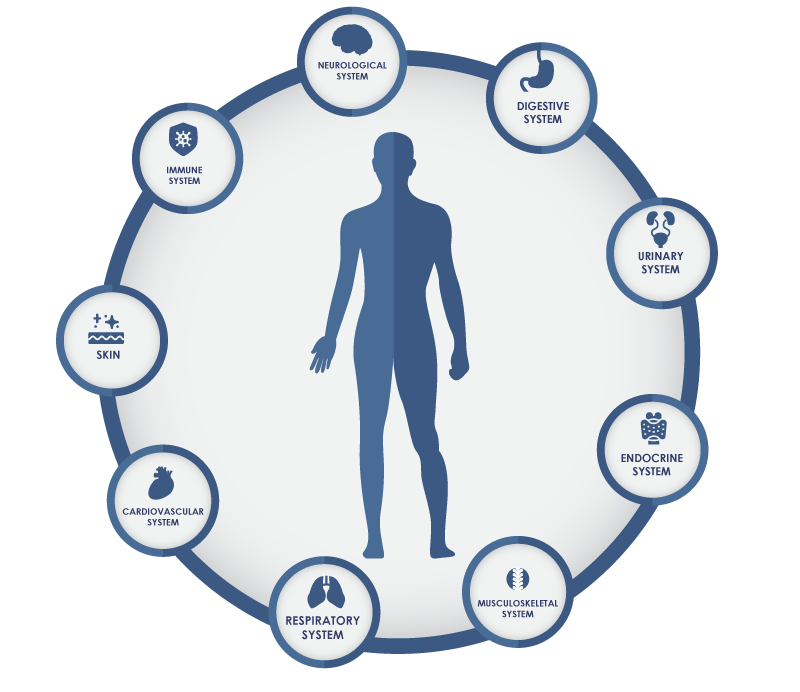Patients
Advantages of MRI for whole body screening
Comprehensive Health Assessment: A full-body MRI can provide a detailed and comprehensive overview of your body’s internal structures. It allows for the evaluation of multiple organs and systems in one session, potentially identifying various conditions early
Non-Invasive and Safe: MRI scans are non-invasive, meaning they do not require incisions or insertion of instruments into the body. Unlike CT scans or traditional X-rays, MRIs do not use ionizing radiation, which can be harmful in high doses.
High Resolution and Contrast: MRI offers high-resolution images with excellent contrast, particularly useful for soft tissue evaluation. It is superior in imaging the brain, spinal cord, nerves, muscles, ligaments, and tendons.
Early Disease Detection: Early detection of diseases such as cancer, neurological disorders, and vascular diseases is possible with a full-body MRI. This early detection can be crucial for effective treatment and better outcomes.
Detailed Imaging of Difficult Areas: MRI can image areas that are difficult to evaluate using other imaging methods, such as the brain, spinal cord, and joints.
Functional and Structural Information: Some MRI techniques can provide functional information about organs and tissues, such as blood flow or chemical composition, in addition to structural details.
Diagnosis and Monitoring: Full-body MRI can be used for the diagnosis of various conditions and also to monitor the progress of diseases and the effectiveness of treatments.
Beneficial for High-Risk Individuals: Individuals at high risk for certain diseases (like those with a family history of cancer) may benefit from full-body MRI screenings for early detection.
What we screen for

Stroke: Ischemic (due to a clot) or hemorrhagic (due to bleeding).
Multiple Sclerosis: Detection of plaques in the central nervous system.
Alzheimer’s Disease: Changes in brain structure and volume.
Parkinson’s Disease: Brain changes associated with Parkinson’s.
Epilepsy: Structural abnormalities in the brain.
Traumatic Brain Injury: Assessing damage after head trauma.
Arthritis: Joint inflammation and damage.
Bone Tumors: Both benign and malignant.
Spinal Disk Abnormalities: Herniated or bulging discs.
Muscle Disorders: Strains, tears, or other injuries.
Heart Diseases: Cardiac abnormalities.
Atherosclerosis: Plaque buildup in the arteries.
Congenital Heart Defects: Structural heart abnormalities.
Vascular Diseases: Aneurysms, blockages, and malformations.
Liver Diseases: Cirrhosis, liver tumors, and fatty liver.
Pancreatic Conditions: Pancreatitis, pancreatic tumors.
Bowel Disorders: Inflammatory bowel diseases like Crohn’s disease.
Uterine Fibroids: Benign tumors in the uterus.
Ovarian Cysts and Tumors: Both benign and malignant.
Prostate Abnormalities: Prostate cancer and enlargement.
Testicular Disorders: Tumors and other abnormalities.
Kidney Diseases: Cysts, tumors, and structural abnormalities.
Bladder Abnormalities: Tumors or structural issues.
Pituitary Gland Tumors: Benign or malignant growths.
Adrenal Gland Disorders: Tumors or hyperplasia.
Lung Diseases: Cancers greater than 10 mm.
Mediastinal Tumors: Masses in the area between the lungs.
Lymph Node Enlargement: Assessing for infections or cancer.
Neurological System
Brain Tumors: Benign and malignant tumors.
Stroke: Ischemic (due to a clot) or hemorrhagic (due to bleeding).
Multiple Sclerosis: Detection of plaques in the central nervous system.
Alzheimer's Disease: Changes in brain structure and volume.
Parkinson's Disease: Brain changes associated with Parkinson's.
Epilepsy: Structural abnormalities in the brain.
Traumatic Brain Injury: Assessing damage after head trauma.
Musculoskeletal System
Arthritis: Joint inflammation and damage.
Bone Tumors: Both benign and malignant.
Spinal Disk Abnormalities: Herniated or bulging discs.
Muscle Disorders: Strains, tears, or other injuries.
Cardiovascular System
Heart Diseases: Cardiac abnormalities.
Atherosclerosis: Plaque buildup in the arteries.
Congenital Heart Defects: Structural heart abnormalities.
Vascular Diseases: Aneurysms, blockages, and malformations.
Digestive System
Liver Diseases: Cirrhosis, liver tumors, and fatty liver.
Pancreatic Conditions: Pancreatitis, pancreatic tumors.
Bowel Disorders: Inflammatory bowel diseases like Crohn's disease.
Reproductive System
Uterine Fibroids: Benign tumors in the uterus.
Ovarian Cysts and Tumors: Both benign and malignant.
Prostate Abnormalities: Prostate cancer and enlargement.
Testicular Disorders: Tumors and other abnormalities.
Urinary System
Kidney Diseases: Cysts, tumors, and structural abnormalities.
Bladder Abnormalities: Tumors or structural issues.
Endocrine System
Pituitary Gland Tumors: Benign or malignant growths.
Adrenal Gland Disorders: Tumors or hyperplasia.
Respiratory System
Lung Diseases: Cancers greater than 10 mm.
Mediastinal Tumors: Masses in the area between the lungs.
Immune System
Lymphoma: Cancer of the lymphatic system.
Lymph Node Enlargement: Assessing for infections or cancer.
Skin
Skin Cancer: Detecting deeper melanomas or skin tumors.
